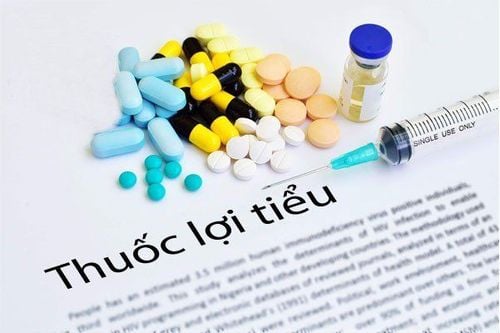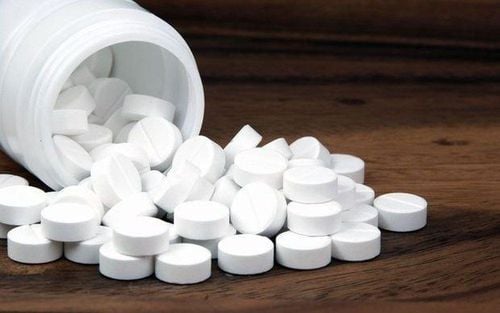This is an automatically translated article.
The mechanism of action of diuretics is mainly by blocking sodium reabsorption in the renal tubules and effectively increasing urinary excretion. Each type of diuretic has a different site of action, resulting in different therapeutic effects and associated adverse effects.
1. Mechanism of action of diuretics
Diuretics increase the amount of urine passing through the kidneys (i.e., promote diuresis). This is done by changing the way the kidneys process sodium. If the kidneys excrete more sodium, then water excretion will also increase. Most diuretics increase renal diuresis by inhibiting sodium reabsorption in different segments of the tubular system.
In addition, 2 diuretics are sometimes used in combination to provide significantly more effectiveness than either drug through synergistic effects. The mechanism of action of diuretics for this is that one nephron segment can compensate for altered sodium reabsorption in another nephron segment; thus blocking multiple nephron sites significantly increases efficiency.
Loop diuretics act by inhibiting the sodium-potassium-chloride co-transporter in the ascending loop of Henle. This transporter normally reabsorbs about 25% of sodium; Thus, inhibition of this pump can lead to a significant increase in sodium concentration in the distal tubule, decreased hypertonicity of the surrounding septum, and less water reabsorption in the collecting duct. This altered sodium and water treatment leads to both increased water loss and increased sodium loss. By acting in the loop of Henle, loop diuretics affect a significant portion of sodium reabsorption and are therefore classified as very potent diuretics. Diuretics of this class also induce renal prostaglandin synthesis, which contributes to renal function including increased renal blood flow and cortical blood flow redistribution.
Thiazide diuretics are the most commonly used diuretics, whose mechanism of action is to inhibit the distal tubule sodium-chloride transporter. Because this transporter normally only reabsorbs about 5% of filtered sodium, these diuretics are less effective than loop diuretics in producing diuresis and sodium diuresis. However, thiazide diuretics are also potent enough to meet the therapeutic need for diuretics.
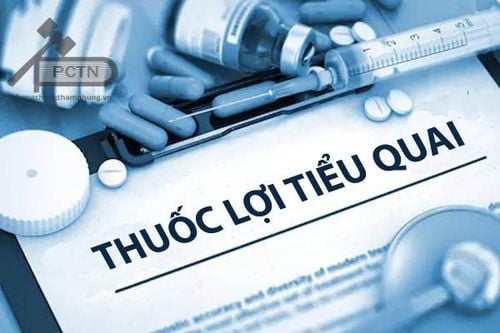
Hầu hết các thuốc lợi tiểu giúp tăng khả năng bài niệu tại thận bằng cách ức chế sự tái hấp thu natri ở các phân đoạn khác nhau của hệ thống ống thận
The third type of diuretic is called a potassium-sparing diuretic. Unlike loop diuretics and thiazides, this class of diuretics does not act directly on sodium transport but acts as an antagonist to aldosterone at the receptor site in the distal distal tubule. This causes more sodium and water to enter the collecting duct and be excreted in the urine. They are called hyperkalemic diuretics because they do not cause hypokalemia like loop diuretics and thiazides. Also, because this class of diuretics have a relatively weak effect on overall sodium balance, they are often used together with thiazides or loop diuretics to help prevent hypokalemia.
An additional class of diuretics are carbonic anhydrase inhibitors that inhibit the transport of bicarbonate out of the proximal tubule into the renal interstitium, resulting in less sodium reabsorption at this site and thus sodium loss. , bicarbonate and more water in the urine. It is the weakest diuretic and is rarely used in cardiovascular disease. Their main use is in the treatment of glaucoma.
Finally, the group of osmotic diuretics. Osmotic diuretics have a diuretic mechanism by inhibiting sodium and water reabsorption by increasing the osmolality of the blood and renal filtrate. Examples of drugs in this class are isosorbide and mannitol, which may be used to reduce intracranial pressure.
2. Cardiovascular effects of diuretics
Through the mechanism of action of diuretics in general on sodium and water balance, diuretics reduce blood volume and venous pressure. This reduces cardiac filling and, by a Frank-Starling mechanism, reduces ventricular contraction volume and cardiac output, leading to a decrease in arterial pressure. The decrease in venous pressure reduces capillary hydrostatic pressure, reduces capillary fluid filtration, and promotes capillary fluid reabsorption, thereby reducing edema.
In addition, there is some evidence that loop diuretics have a mechanism of varicose veins, which may contribute to a decrease in venous pressure. In addition, long-term use of diuretics leads to a decrease in systemic vascular resistance, which helps to maintain a decrease in arterial pressure.
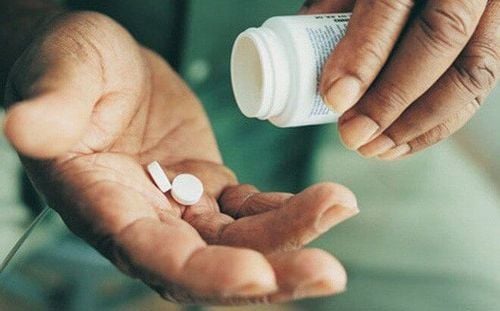
Khi sử dụng thuốc lợi tiểu trong thời gian dài dẫn đến giảm sức cản mạch hệ thống, giúp duy trì giảm áp lực động mạch
3. Application of diuretic mechanism in therapy
3.1 Diuretics to treat hypertension Most hypertensive patients, of which 90-95% have unexplained hypertension (primary hypertension or essential hypertension) are effectively treated with diuretics.
Treatment of hypotension with diuretics is particularly effective when combined with a reduction in dietary sodium intake. The effectiveness of these drugs is derived from their ability to reduce blood volume, cardiac output, and, with long-term treatment, systemic resistance. Thiazide diuretics, especially chlorthalidone, are considered "first-line therapy" for stage 1 hypertension.
Aldosterone antagonist potassium-sparing diuretics (eg, spironolactone or eplerenone) are used in hypertension secondary to primary hyperaldosteronism, and sometimes as an adjunct to thiazide therapy in primary hypertension to prevent hypokalemia.
3.2 Diuretics in the treatment of heart failure Heart failure leads to activation of the renin-angiotensin-aldosterone system, which increases sodium and water retention in the kidneys. This increases blood volume and contributes to the increased venous pressure associated with heart failure, which can lead to pulmonary and systemic edema due to fluid retention.
The main use of diuretics in heart failure is to reduce pulmonary congestion and/or generalized edema and associated clinical symptoms (eg, postural dyspnea). Long-term treatment with diuretics may also reduce cardiac burden by promoting systemic vasodilation, which may help improve ventricular ejection, which is expected in patients with heart failure.
Most patients with heart failure are prescribed loop diuretics because they are more effective at eliminating sodium and water than thiazide diuretics. In mild heart failure, thiazide diuretics can be used. However, given the clinical evidence from studies, only aldosterone antagonists (eg, spironolactone) are the only class of diuretics that can improve prognosis for patients with heart failure.
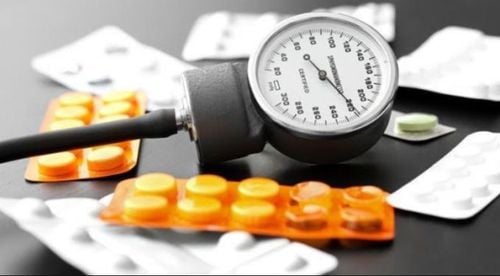
Điều trị hạ huyết áp bằng thuốc lợi tiểu đặc biệt hiệu quả khi có sự kết hợp với giảm lượng natri trong chế độ ăn
3.3 Pulmonary and systemic edema Capillary hydrostatic pressure and capillary fluid filtration are strongly influenced by venous pressure. Thus, diuretics, by reducing blood volume and venous pressure, reduce capillary hydrostatic pressure, reducing capillary fluid filtration and tissue edema.
Because left ventricular failure can cause life-threatening pulmonary edema, most patients with heart failure are treated with loop diuretics to prevent or reduce pulmonary edema. Diuretics may also be used to treat leg edema caused by right-sided heart failure or venous insufficiency in the extremities.
In summary, different types of diuretics have different mechanisms of action but the general aim of diuretic therapy is to increase the amount of water excreted in the urine. Accordingly, the doctor relies on the diuretic drug mechanism to give appropriate indications and effectively control the medical condition.
Please dial HOTLINE for more information or register for an appointment HERE. Download MyVinmec app to make appointments faster and to manage your bookings easily.
References: cvpharmacology.com, mayoclinic.org, nhsggc.org.uk




